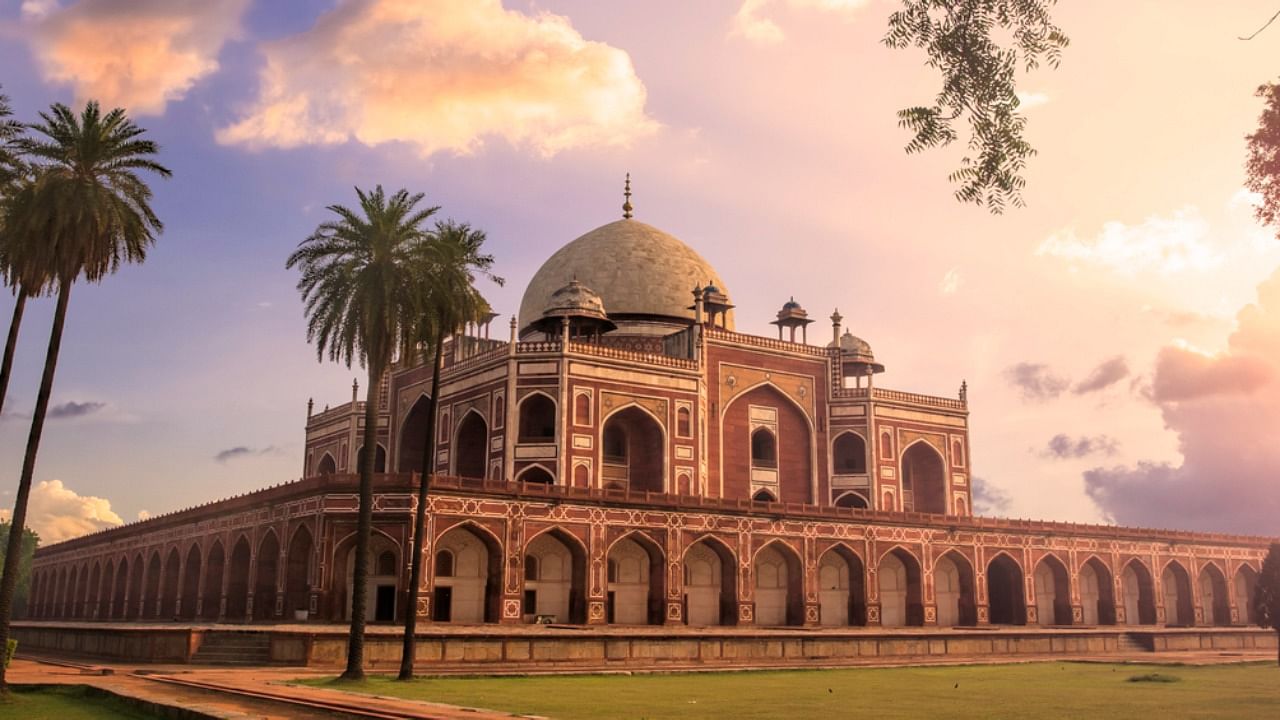
At the heart of Delhi stands a striking blue dome atop a 70-foot building that silently purveys life that whizzes past on the busy roundabout between Mathura Road and Lodhi Road. Four years ago, the passerby would have spared it nothing more than a cursory glance. But a combined restoration effort by the Aga Khan Trust for Culture (AKTC) and Archaeological Survey of India (ASI) later, the Sabz Burj captivates you.
The octagonal structure serves as a tomb, with no confirmation today as to the identity of the person resting inside. A one-of-its-kind 16th-century Mughal-era relic, the Sabz Burj is located west of Humayun's tomb and is not far from the city's favourite picnic spot, Sunder Nursery, dotted with heritage tombs of its own.
This cluster of monuments, thronged by visitors seeking escape from daily mundanities, exists in a shared world claimed by the living and the dead. And at this surreal, ironic confluence lies Delhi.
The national capital is a "graveyard of empires," as senior architect AGK Menon, Delhi INTACH's founder-member and former convener, puts it in an interview with DH.
Its rich historical past that has stood witness to the comings and goings of rulers, from the Sultanate dynasties to the Mughals, is immortalised as material memory that harks back to architectural glory that was symbolic post-13th century.
Anas Khan, who leads heritage walks in the city and is behind the hugely popular Instagram channel unzip_delhi, says the grandeur of tombs was purposeful.
"The tombs and mausoleums built by Mughals had a dual significance. First was to demonstrate the greatness of either the person buried within or the one who commissioned the structure," he tells DH.
The second purpose is more communal. Mughal-era garden tombs, he says, were built in a way so they could double as "serais" or rest houses. "In Islam, giving shelter to a traveller is considered a good deed and these tombs and their chambers functioned similarly so that good deeds would be accounted to the maker of the tomb and the person buried inside."
The sprawling 27-hectare complex of Humayun's Tomb also houses—alongside a chain of over 100 marked and unmarked graves—the Arab ki Sarai, a surviving sample of such quarters constructed near burial grounds to breathe life into the weary traveller.
However, the original intent behind this "serai" is unclear. UNESCO recognises that the "serai" was built for craftsmen constructing Humayun's tomb, but some historians believe it was commissioned by one of the Mughal emperor's widows for her attendants. The importance of this monument is not lost on conservationists since its historic doorway was part of a restoration project by AKTC between 2017 and 2018.
While reparations around the city are giving renewed value to architectural heritage that previously lay forgotten, the abundance of such monuments here—many known, so many more obscure—warrant a greater push for these efforts.
"The ASI recognises only 174 monuments," said Menon. "That's absurd because there are many more. INTACH's Delhi chapter came up with about 2,000 monuments worth considering as heritage—including havelis, institutional buildings, and even settlements like Shahjahanabad."
The Delhi government, acknowledging this, has tasked the non-profit with conserving a number of these lesser-known heritage sites.
Among the hidden gems that do not figure in must-see travel listicles is the tomb of Roshanara Begum, the daughter of Shah Jahan, located in North Delhi. She rests in the verdant gardens of the Roshanara Bagh. Since it is not a ticketed complex, Khan claims her tomb "lies in a decrepit condition, the pavilion mostly occupied by people smoking or gambling."
Menon points out, "Beautification is not conservation. You have to maintain its authenticity. It's a record of an era."
And so, questions of overuse or misuse of these monuments abound— especially against the context of many Indians finding the idea of engraving the names of their lovers on immemorial stone romantic.
Delhi is a living, breathing archive. Its charm lies in how the city is defined by history intricately interwoven into its metropolitan character—every few paces, you land before a historical marvel.
The solution, therefore, cannot be to fence heritage sites off and deprive an eclectic community of its shared culture. Heritage can instead be "designed and controlled," Menon suggests, citing the example of the Mehrauli Archaeological Park, where the past and present have reconciled in peace. "It belongs to the people, and society must enjoy it."
Check out DH's latest videos: